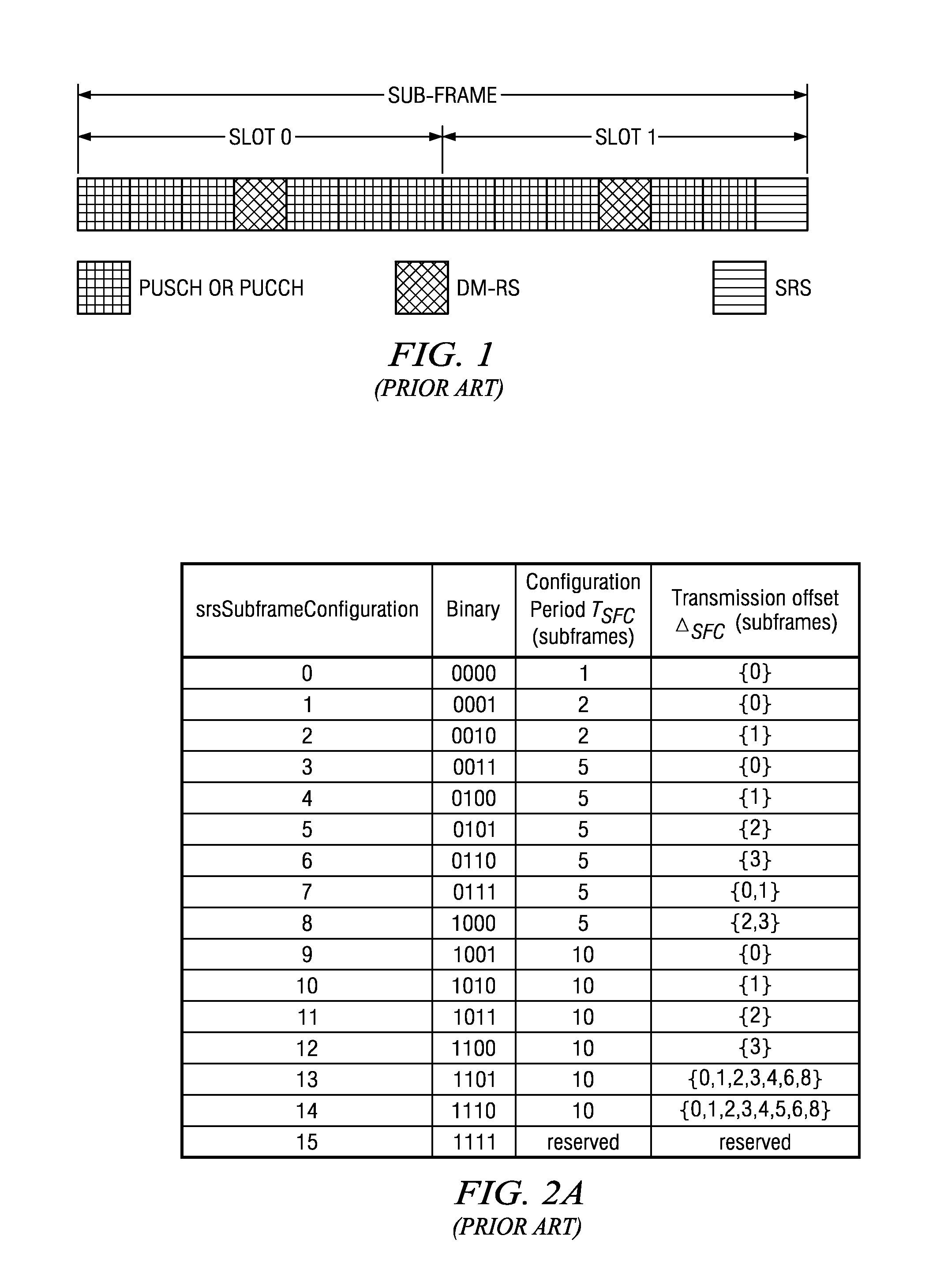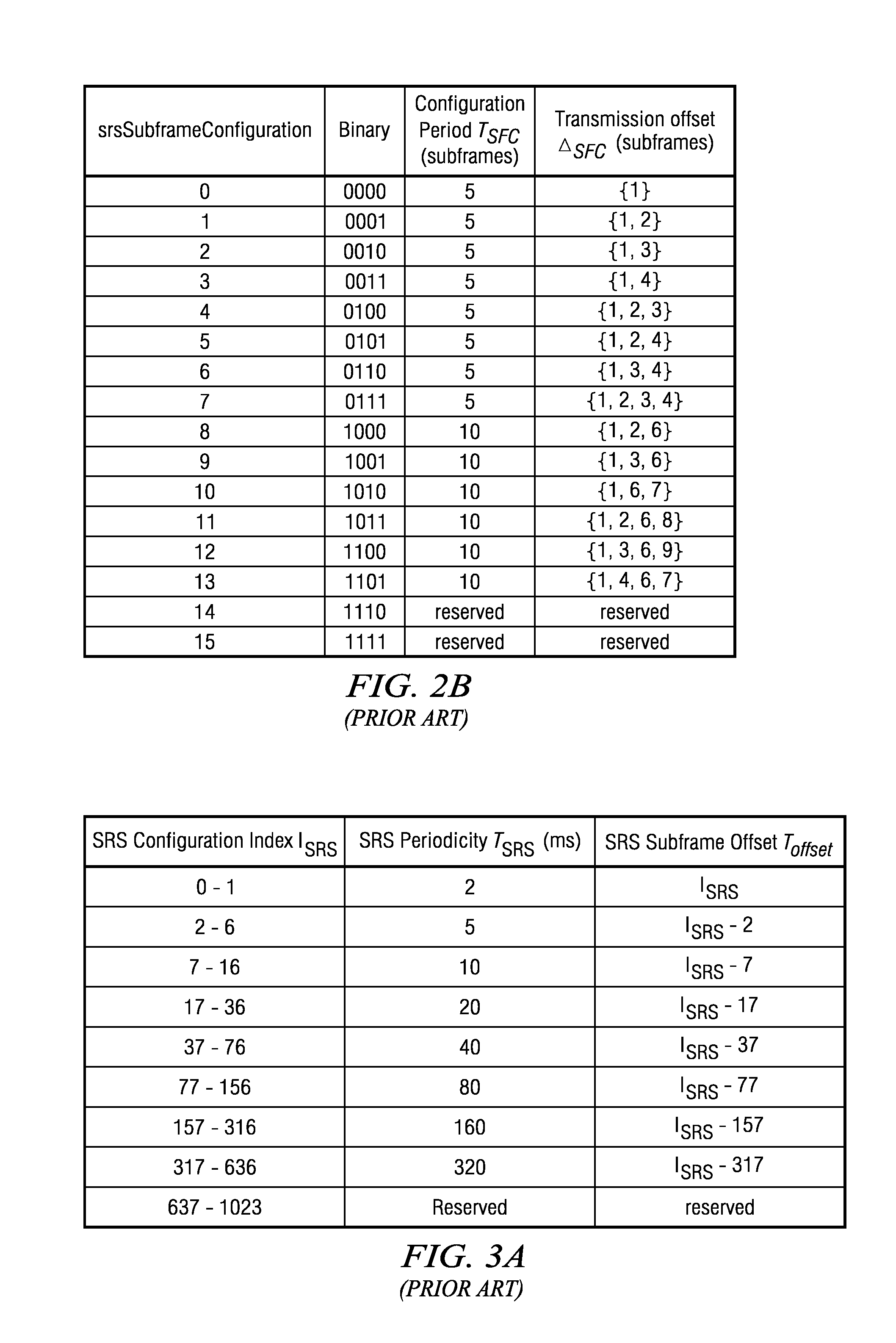Frequency-Hopping Method for LTE Aperiodic Sounding Reference Signals
a reference signal and frequency hopping technology, applied in the field of data transmission in mobile communications systems, can solve the problems of consuming a fixed amount of resources for each ue, affecting the ability to achieve, and single shot methodology is potentially much slower than the fast channel upda
- Summary
- Abstract
- Description
- Claims
- Application Information
AI Technical Summary
Benefits of technology
Problems solved by technology
Method used
Image
Examples
Embodiment Construction
[0056]The present disclosure allows an eNB to define multiple aperiodic sounding reference signaling configurations to be used by a UE. Each of the configurations can employ a different frequency hopping pattern such that all or most of the sounding reference subframes which have been configured with periodic SRS frequency hopping patterns are compatible with the hopping pattern associated with one of the aperiodic configurations.
[0057]This methodology allows the eNB to semi-statically designate which of the defined aperiodic configurations should be used by the UE if aperiodic sounding is triggered in a given subframe. This methodology provides the UE with knowledge of what would be an appropriate hopping pattern in the subframe, while saving the physical layer signaling overhead that would normally be associated with providing bandwidth locations dynamically.
[0058]Note that certain features may be discussed with respect to one of the embodiments, but are applicable to other embodi...
PUM
 Login to View More
Login to View More Abstract
Description
Claims
Application Information
 Login to View More
Login to View More - R&D
- Intellectual Property
- Life Sciences
- Materials
- Tech Scout
- Unparalleled Data Quality
- Higher Quality Content
- 60% Fewer Hallucinations
Browse by: Latest US Patents, China's latest patents, Technical Efficacy Thesaurus, Application Domain, Technology Topic, Popular Technical Reports.
© 2025 PatSnap. All rights reserved.Legal|Privacy policy|Modern Slavery Act Transparency Statement|Sitemap|About US| Contact US: help@patsnap.com



